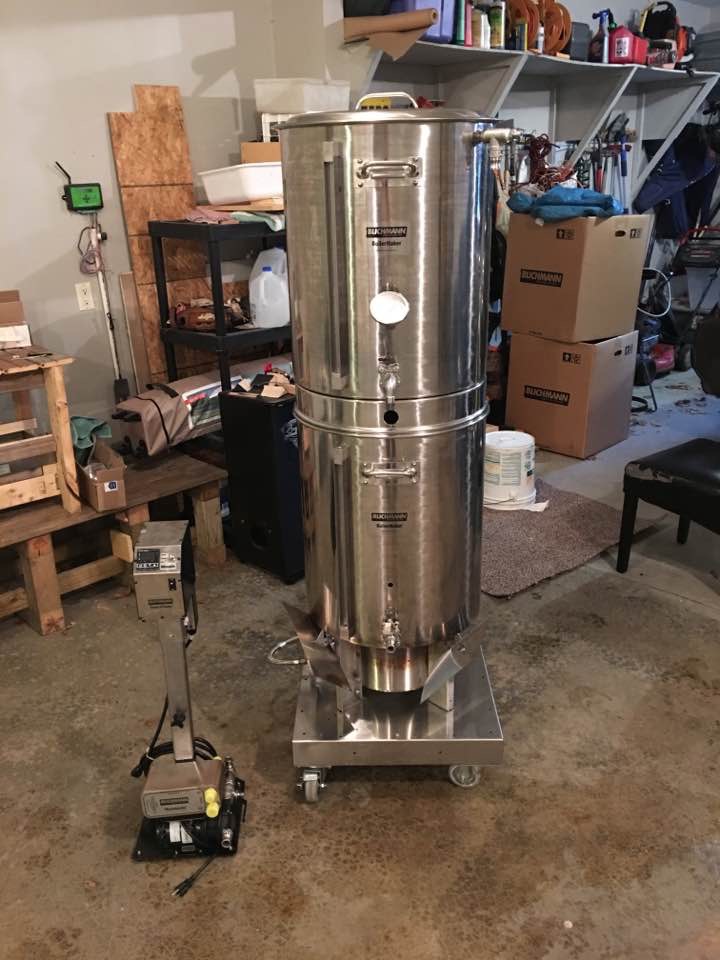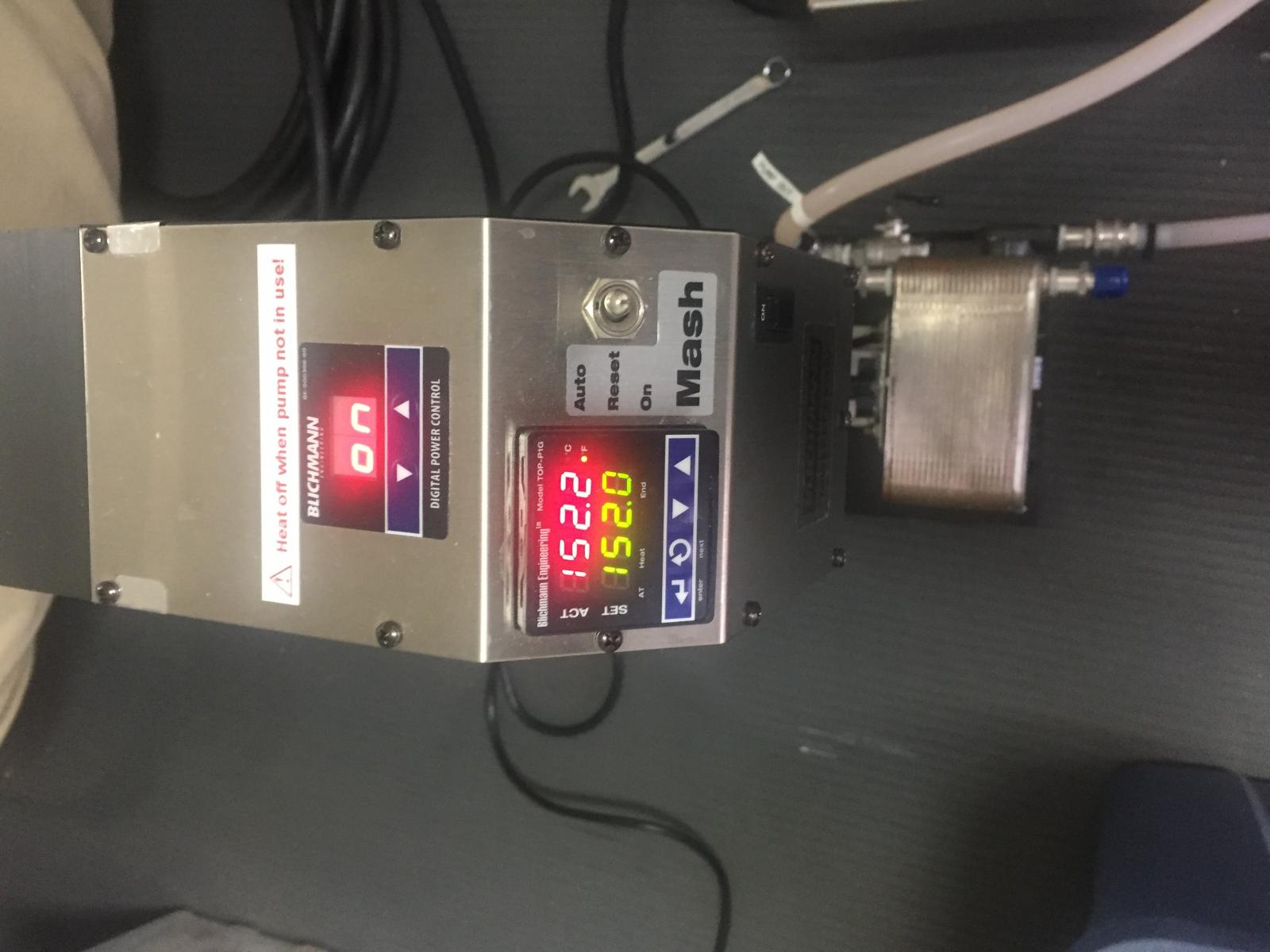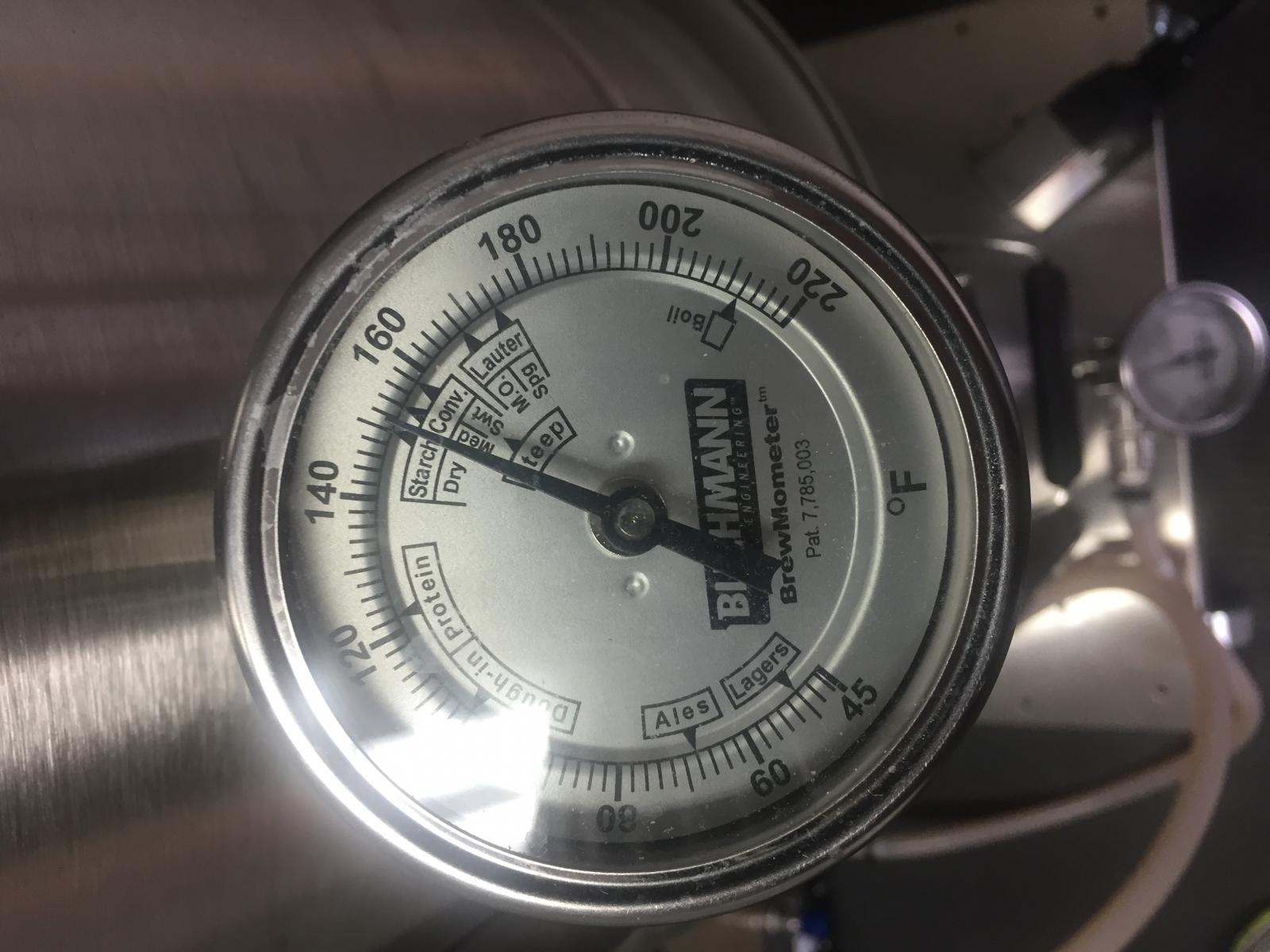Had my first all-grain brew day today on my BE (240V 10gallon):
All in all, it was a great brew day, the system performed very well, definitely makes the brew day a lot more fun than it used to be.
My efficiency sucked (I'm new to AG, and not great with calculating efficiency), but Brewers Friend has me at:
Conversion: 68.7%
Pre-Boil: 65% 23.6 ppg
Ending Kettle: 68% 24.8 ppg
Brew House: 49% 17.9 ppg
My pre-boil gravity was 1.036, OG= 1.044
Pretty sure I didn't boil off enough, I did a 90 minute boil, but has almost 9 gallons left end of boil (7 gallon batch).
Anyway, I got 6+ gallons of 1.044 pale ale wort (Simcoe/Amarillo/Citra/Conan yeast) fermenting now @ 66-67. Not too bad for 1st time, look forward to getting the hang of it, again the BE was a pleasure to use. Should have a tasty 5% APA! Not a bad thing.
Random thoughts-
Thanks every (especially Dana) for this thread and video. Basically copied his process. Water chemistry (mash ph was 5.36), ran boiling wort through pump and chiller to sanitize, etc.
Had my mash temp way too high to start (160+), used some cold water to get it back to 150, once I got temp stabilized, it held the temp right there whole time, with little effort. Very nice. Basically just sit back for 90 minutes, (or start cleaning).
Boil coil kicks ass. Heats water quickly, has a real nice boil going. One thing- My brewometer on the BK never seems to indicate a temp over 208, even when I have a big, roiling boil going.
Therminator is worth every penny. Awesome.
Does everyone spill wort on the floor? Lol. I'm thinking that is just part of the deal (changing hoses, wort in hoses/chiller, etc)

















![Craft A Brew - Safale S-04 Dry Yeast - Fermentis - English Ale Dry Yeast - For English and American Ales and Hard Apple Ciders - Ingredients for Home Brewing - Beer Making Supplies - [1 Pack]](https://m.media-amazon.com/images/I/41fVGNh6JfL._SL500_.jpg)














































